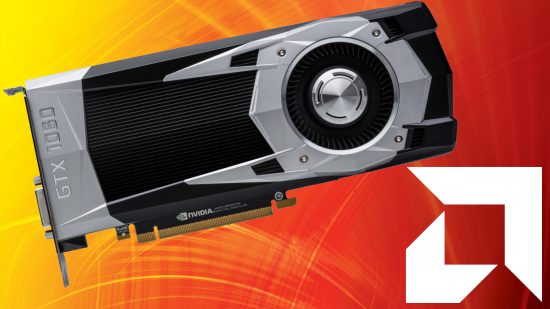It’s well established that AMD FSR technologies are compatible with not just AMD Radeon graphics cards but Nvidia GeForce and Intel Arc ones too. However, proving just how impactful this can be, one YouTuber has shown that the latest AMD FSR 3 frame generation tech can even breathe new life into cards as lowly as the GTX 1060 – cards that Nvidia has long since abandoned with its own DLSS technologies.
AMD FSR 3 promises to improve performance with minimal impact on image quality across most graphics cards, regardless of manufacturer. It does this by generating new frames to insert in between conventionally-rendered frames.
Currently, AMD FSR 3 is only supported in Forspoken and Immortals of Aveum, the latter of which demands an Nvidia GeForce RTX 2080 Super graphics card as part of its minimum specifications. However, these requirements were set prior to the game supporting AMD FSR 3, whose addition could see less powerful pixel pushers find the horsepower needed to run it.
However, the Frame Generation portion of the technology comes with slightly higher requirements than its upscaling counterpart, leaving older GeForce series and Radeon GPUs without official support. Seeing both features in action on aging GPUs, it’s unfortunately clear that performance gains can’t fix the underlying problems of latency that arise from low base frame rates.

Enter the Nvidia GeForce GTX 1060, the former long-standing favorite of Steam users. Its performance in Immortals of Aveum is poor when running without upscaling or frame generation technologies, sitting at a suboptimal 20-25fps. These numbers are recorded with the game running at 1080p using the game’s lowest settings.
Flip on FSR 3, though, and the frame rate leaps to just shy of 60fps. Sadly, while gameplay looks smoother to the eye, the underlying latency is still very high and so doesn’t feel as good as a frame rate of this caliber should.
This is all according to findings by YouTuber Daniel Owen (via PC Gamer), who showcases that a combination of Nvidia Reflex and FSR 3 upscaling appears to create a subjectively better gameplay experience. The same is true for the Nvidia GeForce RTX 1070 that they also test in their video.
While the high latency is unfortunate, these results do at least demonstrate that there is room for older graphics cards to benefit from FSR 3 Frame Generation. Referring back to AMD’s blog for the feature, the company states, “it is highly recommended to be always running at a minimum of ~60 FPS before frame generation is applied for an optimal high-quality gaming experience and mitigate any latency introduced by the technology.”
The quote above does help explain why the GTX 1060 and 1070 encountered problems while running Immortals of Aveum, putting the fact that they’re both well below the game’s minimum requirements aside. All the same, as FSR 3 support grows, we could see older hardware be given new life thanks to this feature.
If you’re still rocking older hardware and looking to upgrade, check out our best graphics card guide. We also have reviews for the latest pixel pushers, including the AMD Radeon RX 7800 XT, that include benchmarks and more.
